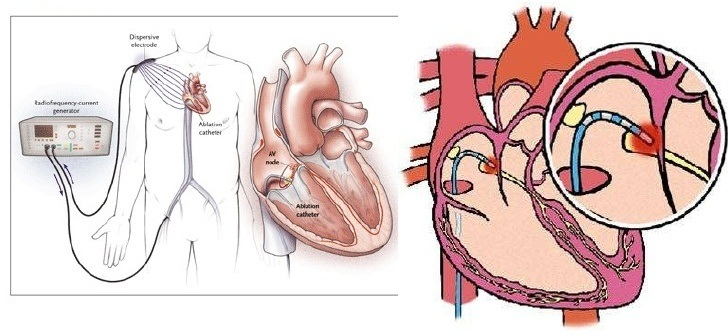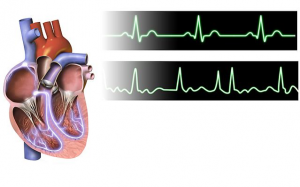Jack’s Health: Atrial Fibrillation
Jack’s Story Continues
- Jack is found by his daughter unkempt, SOB, limping slightly, and has a strange odor coming from him
- States it feels like his heart is racing and he can’t catch his breath
- Radial pulse 130 BPM (irregular)
- Jack is taken to the emergency department as per his family physician’s recommendation
- Jack is diagnosed with new onset of atrial fibrillation
- Admitted to hospital with a cardiologist and endocrinologist referral
Overview
In a normal heart rhythm, a tiny cluster of cells at the sinus node sends out an electrical signal. The signal then travels through the atria to the atrioventricular (AV) node and passes into the ventricles, causing them to contract and pump out blood. In atrial fibrillation, electrical signals fire from multiple locations in the atria (typically pulmonary veins), causing them to beat chaotically. Since the atrioventricular (AV) node doesn’t prevent all of these chaotic signals from entering the ventricles, your heart will beat faster and more irregularly than normal.
Atrial Fibrillation
- Irregular and often rapid heart rate
- Can increase risk of stroke, heart failure, other heart-related complications
- The two atria beat chaotically and irregularly – out of coordination with the two ventricles
- Episodes may come and go, or does not go away requiring treatment
- Is not life-threatening but a serious medical condition that may require emergency treatment
- Major concern is the potential to develop blood clots in the atria
- These clots may circulate to other organs and lead to ischemia
- May weaken the heart and lead to heart failure
Atrial fibrillation may be:
Occasional – paroxysmal A-fib comes and goes, usually lasting for a few minutes to hours. May last up to a week and happen repeatedly.
Persistent – heart rhythm does not go back to normal on its own. Will need treatment; medication or electrical shock to restore normal heart rhythm.
Long-standing persistent – continuous and lasts longer than 12 months.
Permanent – normal heart rhythm cannot be restored. Requires medication to control heart rate and to prevent clots.
Symptoms
- Palpitations, sensations of a racing, uncomfortable, irregular heartbeat or a ‘flip-flopping’ in the chest
- Weakness
- Reduced ability to exercise
- Fatigue
- Lightheadedness
- Dizziness
- Shortness of breath
- Chest pain
Possible Causes
Abnormalities or damage to the heart’s structure are the most common cause of A-fib.

Possible causes of A-fib include:
- High blood pressure
- Heart attack
- Coronary artery disease
- Abnormal heart valves
- Heart defects (congenital)
- Overactive thyroid gland or other metabolic imbalance
- Exposure to stimulants – medications, caffeine, tobacco, alcohol
- Sick sinus syndrome – improper functioning of the heart’s natural pacemaker
- Lung diseases
- Previous heart surgery
- Viral infections
- Stress due to surgery, pneumonia or other illnesses
- Sleep apnea
Management
Treatment with Medication
| Rate Control Medications | Rhythm Control Medications |
| Beta blockers (Metroprolol or Bisoprolol) | Amiodarone (Cordarone) |
| Calcium channel blockers (Diltiazem) | Dronedarone (Multaq) |
| Cardiac glycosides (Digitalis) | Flecainide (Tambocor) |
| Propafenone (Rythmol) | |
| Sotalol (Sotacor) |
Procedures for Rhythm Control
Electrical Cardioversion – delivering a shock to the heart, like defibrillation but a smaller amount of electricity. Cardioversion is a short-term solution. In most patients, the A-fib comes back.
Catheter Ablation – inserting thin wires into the veins in your groin or neck. The tip of the wire is directed towards the area in your heart that is firing irregular impulses. Once in position, a small jolt of radiofrequency electrical current is delivered to burn out the tiny areas.




